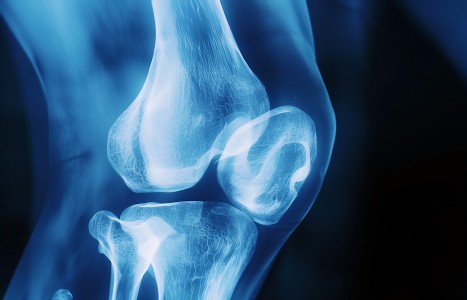While there may be no “magic bullet” when it comes to health, this should not dissuade patients or practitioners from seeking out ingredients that offer multiple health benefits. When it comes to dietary supplements, there are thousands upon thousands of choices. So, why not choose one that can address pain and assist with mental health? A supplement that can address inflammation, while also preventing certain types of cancer.
| Digital ExclusiveWeight Loss, Proper Caloric Intake and Exercise
It is the chiropractor's basic philosophical tenet that the body's innate recuperative power is af-fected by, and integrated through,the nervous system. Furthermore,the practice of chiropractic includesestablishing a diagnosis, facilitating neurological and biomechanical integrity through appropriate chiropractic case management, and promoting health.
In adhering to these principles, the following commentary, with its short discussion on weight loss, proper caloric intake and exercise, reviews some of the basics of nutrition and biochemistry, as taught in our chiropractic colleges, that can be used to promote our patients' health. As we enter 2007, it's time to set some goals for our patients and get them pumped up to make those goals real. Let's get them prepared to read up, work hard and attain a great, healthy body before year's end.
Want Your Patients to Feel Good Without Drugs?
Evidence for the existence of endogenous substances that behave like opiates (morphine-like pain relievers) was first provided in the late 1970s with the isolation of two opioid pentapeptides: methionine and leucine. These two opioids are part of a larger precursor molecule produced in the anterior portion of the human pituitary gland. Researchers have identified in opioid peptides other opioids substances; beta-lipotrophin, beta-endorphin and dynorphin. Their effects on the body are widespread, functioning as both neurohormones and neurotransmitters.
Fruit and vegetables are important healthy dietary carbohydrate sources. Interestingly, it has been estimated that the average American instead consumes about 50 percent of carbohydrates as simple sugars in the predominant form of sucrose and high-fructose corn syrup.
Research has demonstrated that the blood concentration of beta-endorphin and/or beta-lipotrophin increases in response to exercise. In fact, elevation of beta-endorphin in exercising men and women has ranged to as high as five times its level seen at rest, thus triggering the so-called "exercise high" state of exercise induced relaxation and euphoria. Hence, endorphin secretion also has been implicated in increased pain tolerance, improved appetite control and a reduction in anxiety, tension, anger and confusion. That piece of information alone might get your patients moving.
Too Few Healthy Carbs
Doctors of chiropractic are extremely well-educated in the biochemistry of human nutrition. Thus, the following body of knowledge also should be commonplace in our chiropractic patients' education. Fruits and vegetables are important healthy dietary carbohydrate sources. Interestingly, it has been estimated that the average American instead consumes about 50 percent of carbohydrates as simple sugars, primarily in the form of sucrose and high-fructose corn syrup. This basically amounts to more than 16 teaspoons a day of simple sugars, or 60 pounds of table sugar and 46 pounds of corn syrup each year! In addition, excessive dietary sugar is believed to be involved in a variety of disease processes, such as diabetes, obesity and coronary artery disease. I point this fact out to my patients when they inform me that they have been told they should exercise and "cut down on their carbs" to lose weight or to curb their "pre-diabetic tendency." I ask them, "What kind of carbs are you cutting out?" This always leads me to the following discussion.
The main function of carbohydrates is to serve as an energy fuel for the body. The energy derived from the breakdown of glucose and glycogen ultimately is used to power muscle contraction, as well as all other forms of work in the body. Thus, it's important that adequate amounts of carbohydrates are ingested routinely to maintain the body's relatively limited glycogen stores, especially when one is exercising. For example, if two few carbohydrates are ingested, glucose is then obtained from glycogen breakdown and the body's carbohydrate stores are depleted (induced hypoglycemia). In contrast, following a meal, carbohydrates might be readily converted to muscle and liver glycogen. But if you eat excess, (such as the average American's choice to consume their carbohydrates in the form of simple sugars, i.e., sucrose and corn syrup fructose), these excess sugars are converted and stored as fat. This action also helps to explain how body fat increases when excess food (calories/simple carbohydrates) is consumed, even if the diet is low in fat. It also stands to reason that it's better not to skip a meal and to eat many small meals throughout the day.
Carbohydrates also provide a protein-sparing effect. Under normal conditions, protein serves a vital role in the maintenance, repair and growth of body tissues. When carbohydrate reserves are reduced, however, metabolic pathways exist for the synthesis of glucose from protein and the glycerol portion of the fat molecule. This process of gluconeogenesis provides a metabolic option for augmenting carbohydrate availability during periods of depleted glycogen stores. I routinely advise my patients not to start on a diet when we are trying to heal their body from injury/surgery/stress/etc. All too often, the price is paid not in weight loss, but slower response time in pain reduction, depression and a host of other symptoms that had little to do with the patient's original injury.
Eat to Lose Weight
I also have those patients who tell me they have a "slow" metabolism and that just looking at food adds weight! In practice, of course, I have never seen this phenomenon. But here's the good news about not skipping or scrimping on meals. Dietary-induced thermogenesis has been compared in exercising and resting subjects after consuming meals of similar size and portion. In a small study, men performed submaximal moderate exercise on a bicycle before breakfast one day, and 30 minutes after a breakfast containing 350, 1,000 or 3,000 kcal the next day. Results indicated that 1. Breakfast increased the resting metabolism by 10 percent; 2. Variations in the number of kcal consumed at breakfast had no influence on the thermic effect; and 3. When exercise was performed following a meal of 1,000 kcal or 3,000 kcal, energy expenditure was larger compared to exercise without prior food intake. Although more research is indicated, it would seem reasonable to encourage exercise after eating to stimulate caloric expenditure for weight control.
Exercise Training in Diabetes
As a consequence of obesity, many overweight individuals have reduced glucose tolerance that results in hyperinsulinemia and insulin resistance. Sadly, many of these patients develop adult-onset diabetes before even entering a chiropractic practice. In this situation, I have personally seen in many of my diabetic patients, that exercise training often can reduce resting plasma insulin levels and lower insulin output during a glucose tolerance test, both of which demonstrate evidence for an improved insulin resistance. Improved insulin resistance with exercise training is important therapy that ultimately can result in a lowered insulin requirement for these patients who are insulin dependent. These patients must be pre-informed of this, in order that they continuously monitor their blood sugars and food intake with response to insulin needs and avoid any serious complications from unexpected exercise induced hypoglycemia. Diabetics certainly can safely engage in regular heavy exercise, but they must be urged to remain cautious and proceed under supervision, with constant vigilance to monitoring their blood glucose and insulin requirements.
Exercise Training and OverallCardiac Output
Blood flow (cardiac output) increases in proportion to the intensity of exercise, but is significantly less compared to a trained athlete. For example, the cardiac output of an Olympic medal winner in crosscountry skiing increased almost 8 times above rest to 40 liters per minute at maximum work, with a strike volume of 210 milliliters per heartbeat. This is nearly twice the volume of blood pumped per beat in comparison to healthy, sedentary people of similar age! The difference is attributed to the athlete's considerably larger stroke volume during rest and exercise compared to the sedentary individual. While the sedentary individual might attain the same target heart rate during exercise as the well-trained athlete, the sedentary individual will produce significantly less blood flow (cardiac output) and stroke volume. Current research indicates that for both athletes and sedentary individuals, the greatest increases in stroke volume occur in transition from rest to moderate exercise.
It would seem reasonable to educate the patient on daily aerobic exercise to develop endurance and stamina before having them begin moderate aerobic exercise activity. I have found that a 10-week "walk to health" program that ranges from 10-20 minutes a day with varying forms of brisk walking is helpful in motivating the patient to participate in a life- changing moderate exercise program that is good for their heart.
| Dr. Nancy Molina practices in San Juan Capistrano, Calif., specializing in the treatment of acute and chronic pain and providing nutritional, diet and lifestyle recommendations to her patients. She has worked as a clinical instructor, paramedic lead, forensic pathologist assistant, and deputy coroner during her career. Her extensive training took her to facilities such as Caesar's Palace and the Las Vegas Convention Center as an EMS Trauma Coordinator, and later to the Department of Energy's Nevada Test Site at Los Alamos, New Mexico, where she oversaw their paramedic unit. |


